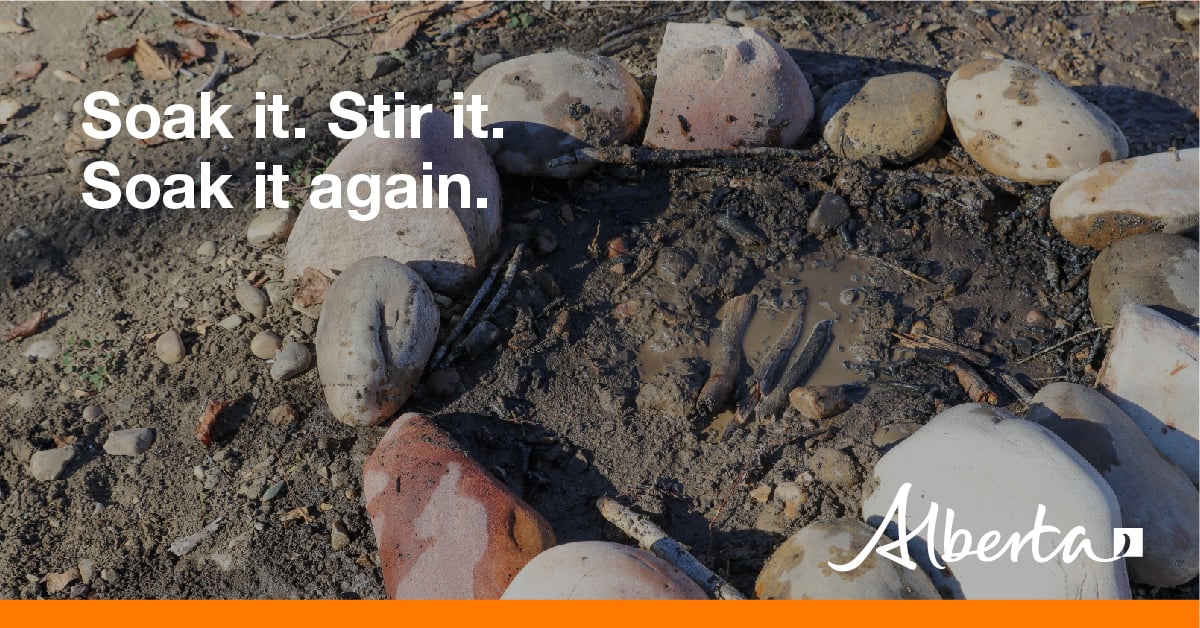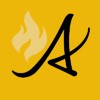
Please make sure to fully extinguish your campfire, including any small cooking or warming fires. To do so, thoroughly soak the ashes, stir them, and soak them again until they are cool to the touch.
If you see smoke or flame and suspect that it is a wildfire, please call 310-FIRE (3473).
ROCKY MOUNTAIN HOUSE FOREST AREA WILDFIRE UPDATE
The wildfire danger across the Rocky Mountain House Forest Area is MODERATE. As is typical for this time of year, fine fuels such as grass, leaves and other vegetation are drying out, increasing their likelihood to fuel a wildfire. Please remain aware of this risk and use caution when recreating or working outdoors.
Fire danger is a relative index depicting forest environment conditions, how a fire will behave and how much damage a fire could do.
 Since January 1, 2024 there have been 79 wildfires in the Rocky Mountain House Forest Area, which have burned 11,517.55 hectares.
Since January 1, 2024 there have been 79 wildfires in the Rocky Mountain House Forest Area, which have burned 11,517.55 hectares.
There are three active wildfires in the Rocky Mountain House Forest Area, they are all classified as under control, meaning they are completely contained and will be extinguished.
For the most up-to-date wildfire information, visit the Alberta Wildfire Status Dashboard.
FIRE PERMITS ARE REQUIRED
Until October 31, all burning activities in the Forest Protection Area, excluding campfires, require a fire permit. Please check with your local municipality for any additional rules or restrictions before any burning takes place.
Fire permits are free and can be requested online or by calling the Rocky Mountain House Forest Area at 403-845-8250. Once you have a permit, follow these safe burning practices:
- Never leaving your fire unattended.
- Only burn what you can control and follow the conditions of your permit.
- Have your fire permit ready to present if requested.
- Watch for sparks and burning material that may result in smaller fires. Larger fires can send these sparks over several kilometres, especially when burning in the wind.
- If the wind is gusting over 15 km/hour or increases beyond the limit on your permit, immediately extinguish your fire.
- Have the tools and equipment listed in your permit available to put out any spot fires that may occur.
HUNTING SEASON WILDFIRE PREVENTION TIPS
Hunting season is underway in many foothill and mountain regions. If your hunting trip involves using off-highway vehicles (OHVs) or having a campfire, be aware that these activities, combined with drying vegetation, can create fuel for wildfires. It’s important to take necessary precautions to ensure you have a safe trip and help prevent human-caused wildfires.
OHV Safety | Always carry firefighting equipment such as a small shovel, collapsible pail or fire extinguisher. Stop frequently and take the time to clear debris from your machine’s hot spots. If the debris is smouldering, soak it, stir it, and soak it again to make sure it is extinguished. Visit our website for more OHV wildfire prevention tips.
Campfire Safety | In the backcountry or any area without a dedicated fire ring, choose a location free from dry grass, bushes, leaves, branches, tree trunks, peat moss, and overhanging branches. When possible, use previously established fire sites. If no dedicated fire ring is available, follow these guidelines:
- Create a circle about one metre in diameter,
- Dig or scrape down to the mineral soil, and
- Clear away any flammable materials within one metre of the pit.
Always extinguish your campfire when you are done with it. Soak it. Stir it. Soak it again. Before heading out, visit our website for a refresher on campfire safety.

FIRESMART YOUR HOME AND PROPERTY
FireSmart is a national initiative aimed at boosting wildfire resilience throughout Canada. It offers valuable advice for homeowners, residents, businesses, local governments and Indigenous communities to implement small but impactful changes.
With fall approaching, farm and acreage owners are encouraged to explore FireSmart strategies for their properties. Here are some tips to get you started:
Fence lines and ditches | Unmanaged fence lines, ditches or roadsides usually have a large accumulation of grass, weeds and brush that can act as a wick, carrying intense, quick-spreading fires into your yard, fields or building sites. Manage the vegetation along fence lines and ditches leading up to your building sites or to other values for at least 100 metres (300 feet) in all directions. This can be done by mowing these areas. At minimum, mow them once late in the fall. Herbicide or a weed-eater can also help minimize the vegetation under the wires and between the posts. Remember to ensure that all your corral lines are also free from vegetation that could wick fire into your fenced feed areas.

It's never too late to participate. Learn how you can FireSmart your home and property! Visit FireSmart Alberta. For farm or acreages, you can download the Farm and Acreage FireSmart publication.
ALBERTA WILDFIRE APP
The Alberta Wildfire Status App is a great way to stay informed about wildfire information in Alberta. Download the app today (for Apple or Android) to have instant access to information on wildfire locations and sizes, fire ban information, conditions in your local forest area and directions on how to report a wildfire.
